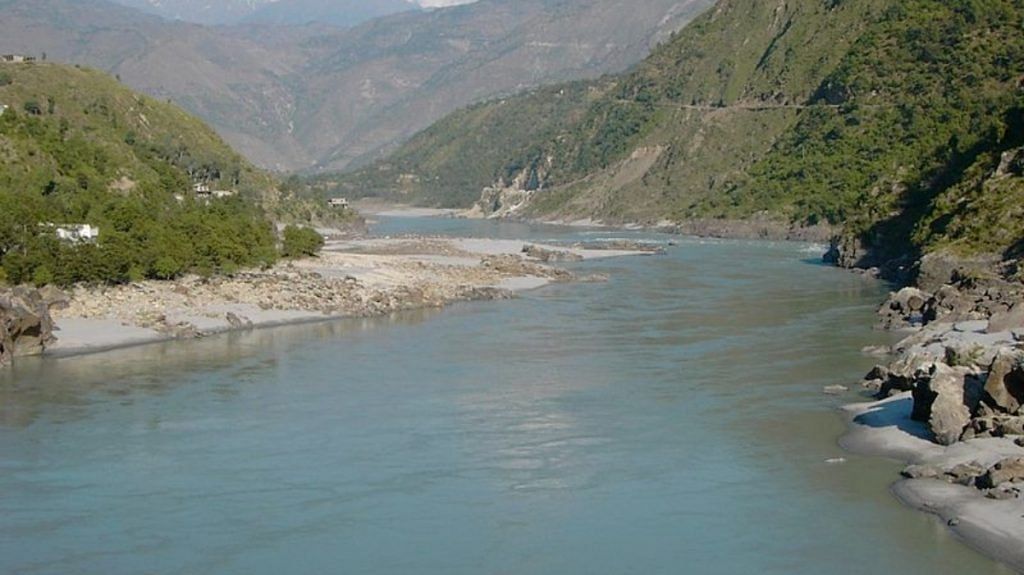New Delhi: Forty years after it was first envisaged, the Pakistan Army has now tied up with China to build the multi-billion dollar Diamer-Bhasha dam — much to the anger of India as it will come up in the disputed Gilgit-Baltistan region on the Indus river.
The dam, part of a major hydro power plan, will be built jointly by state-run firm China Power and Pakistan Army’s commercial wing, Frontier Works Organisation (FWO).
The Chinese firm has a 70 per cent stake in the joint venture, while the FWO holds the remaining 30 per cent stake.
The project with a total financial outlay of about Pakistani Rupees 1,406.5 billion would be completed in 2028, Water and Power Development Authority (WAPDA) Chairman Lt Gen (retd) Muzammil Hussain said.
He added the project would have a gross storage capacity of 8.1 MAF (million acre feet) and power generation capacity of 4,500 MW (megawatt), with an annual generation of 18.1 billion units.
According to the plan, the electromechanical and power-generation project would be taken up at a later stage.
The project, however, drew sharp response from India, which issued a statement Thursday, saying building such projects in territories under Pakistan’s illegal occupation was “not proper”.
“We have consistently conveyed our protests and shared concerns with both Pakistan and China on all such projects in the Indian territories under Pakistan’s illegal occupation,” the Ministry of External Affairs said.
However, China defended itself Friday saying it is part of a “win-win” bilateral cooperation to promote the well-being of the local population.
China and Pakistan are also jointly building the 60-billion dollar China-Pakistan Economic Corridor through Pakistan Occupied Kashmir (PoK), which will connect the two nations.
Also read: CPEC – China’s most ambitious project in Pakistan has become a corridor to nowhere
Location of dam
The dam will come up on the Indus river near Chilas in the Khyber-Pakhtunkhwa and Gilgit-Baltistan regions of Pakistan.
According to NS Energy, it will be located in the Diamer district of Gilgit-Baltistan province, about 315 km upstream of the Tarbela Dam and 40 km downstream of the Chilas town.
“The project area will encompass nearly 110 km, extending 100 km from the dam site up to the Raikot Bridge on the Karakoram Highway,” it added.
Over 32,000 acres of land, including about 31,977 acres in Gilgit-Baltistan and 162 acres in Khyber-Pakhtunkhwa, have been acquired as of January 2019, which comprises approximately 86 per cent of the total land required for the project.
First proposed in 1980
Pakistan has been for years very keen to build a cascade of mega dams along the Indus flowing down from the Himalayas, but has struggled to raise money from international institutions amid opposition from India.
Pakistani daily Dawn reported that the 8 MAF reservoir with 272-metre height will be the tallest roller compact concrete (RCC) dam in the world.
“It will have a spillway, 14 gates and five outlets for flushing out silt. The diversion system involves two tunnels and a diversion canal — all three having one kilometre length each,” the report said.
“The bridge — a box girder structure — under the contract will be constructed downstream of the dam structure while the 21 MW power plant will be built to meet energy requirements of the project during construction.”
Publicly available data showed the dam was first envisaged in 1980. However, it was approved for construction only in 2006 by then military dictator Gen Pervez Musharraf.
Both the World Bank and the Asian Development Bank (ADB) had distanced themselves from the project, considering India’s opposition.
The World Bank had asked Pakistan to obtain a no-objection certificate from India, which Pakistan refused to do, while the ADB in 2016 declined to fund the project because of the disputed nature of the territory.
Such was Pakistan’s desperation for money that even its Supreme Court had set up a fund in July 2018 to collect donations for the Diamer-Bhasha and Mohmand dams, and the website of the Supreme Court specifically solicited donations in the name of the construction of these reservoirs.
Also read: Under pressure from China, Pakistan Army has taken institutional control over CPEC
